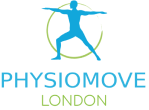The last few weeks has seen us in an unprecedented situation, whereby a huge percentage of the population are now working from home.
Whilst technology such as laptops, conference calls and video meetings has meant this is achievable for most, it’s easy to forget about the set-up of your workstation and how this can have a potential impact on your health and well-being.
If you’re not lucky enough to have a home office already, you may be finding that your posture has gone out the window and you’re perching at various locations around your house or flat throughout the day – on the sofa, the bed, or even on the floor – whilst moving around much less too.
This can have a huge impact on our bodies. Musculoskeletal disorders, such as back, neck, shoulder, wrist and arm pain, as well as eye strain, headaches and migraines, are a huge problem which can stem directly from working in an incorrect position with inappropriate equipment.
But even if you don’t have a full office set-up, there are still some things you can do to help yourself and minimise the risk of developing or worsening musculoskeletal disorders or other postural aches and pains.
● Make sure your screen is at eye-level – no matter where you’re working in your home, by making sure your screen is at eye level, it stops you from slouching over your screen. Your screen should also be at arms length to make sure your eyes aren’t strained from being too close or too far away.
● Use your laptop safely – as tempting as it may be to slump on the sofa or bed all day whilst working on a laptop, it’s important that you sit up straight, ideally with your laptop on a stand to raise it up to eye height. You should also try to use a wireless or Bluetooth keyboard to make sure that the screen stays at arms length.
● Mix it up – if you don’t have a desk and suitable chair, mix it up where you’re working from. Stand at the kitchen counter if this is a suitable height for you to work from (you can still use your laptop stand and keyboard) or change your posture on your chair by elevating your legs with cushions. By reducing the amount of time you’re sitting in one position, the risk of muscle and joint aches is reduced.
● Postural exercises and stretches – get up every half an hour or so and do some stretches and exercises to relieve your muscles. This will help to stop your joints from stiffening up, keeping you subtle and reducing the risk of aches and pains.
● Exercise – it can be more tempting whilst working at home to power away at your screen for hours on end without taking so much as a lunch break. Make the most of the current government guidelines of exercising away from your home once a day. Walk around your house and garden too, or even do a home workout. Not only does it keep you active, it clears your head, helping to keep your mental health in check too.
What’s ultimately important is that, if you are working from home, make a conscious effort to work in a comfortable and suitable environment as best as you can, reducing your risk of causing yourself potentially long term issues.
As physiotherapists, we recognise how the changes in work environment can cause musculoskeletal problems and that, with so many people currently working from home, this could potentially be a huge issue.
If you are already undergoing physiotherapy for muscle problems exasperated by working at a desk, it’s even more vital that you continue with the programme of exercises that your physio has set you. This should keep on top of any aches and pains you do experience. If you do find yourself suffering from any new pains, it’s equally as important that you contact your physio for help.
In these uncertain times, there are challenges in how we as a practice can ensure the health and well-being of our patients remains a top priority and we have had to look at ways to adapt our services to take these challenges into account.
That’s why we are delighted to be offering remote consultations via telephone or video for patients to ensure that we continue the best possible treatments to those who need our help. By ensuring we can still see patients remotely, they do not have to compromise on their health and well-being during this period of social distancing and isolation.
Pain can hugely limit people’s ability to carry out simple daily tasks and these consultations are essential to ensure that we can help our patients keep on top of their pain through continuous monitoring, support and advice when they need it.
If you’d like more information about our video and telephone consultations, contact us to see how we can help.


